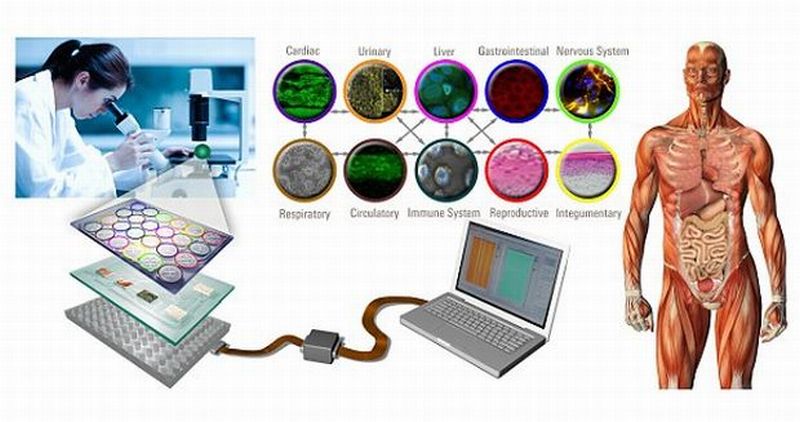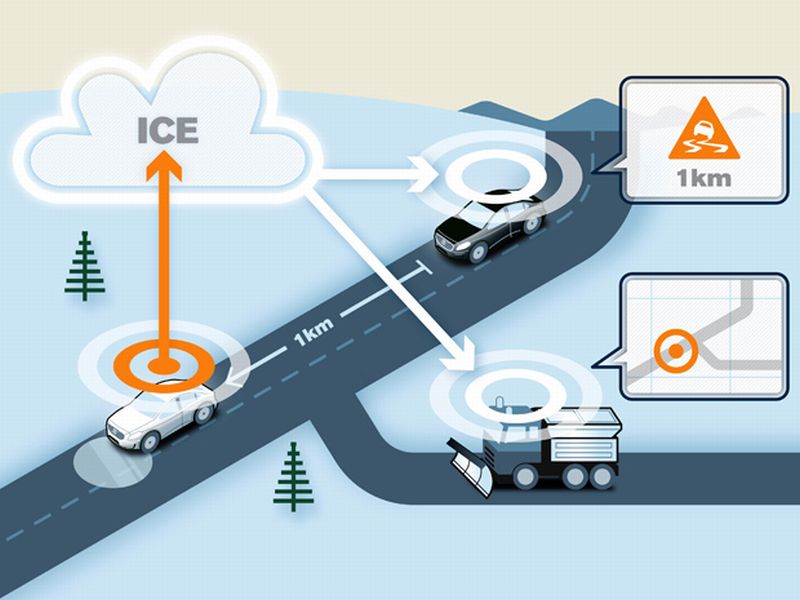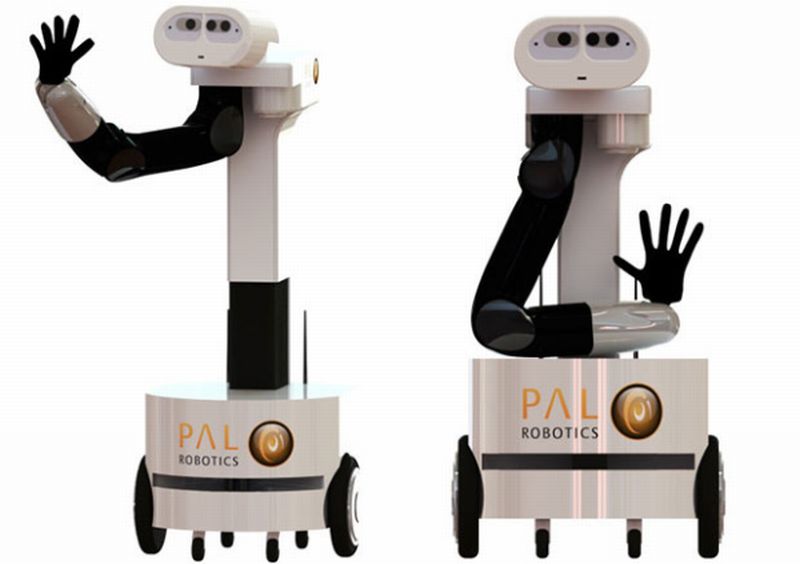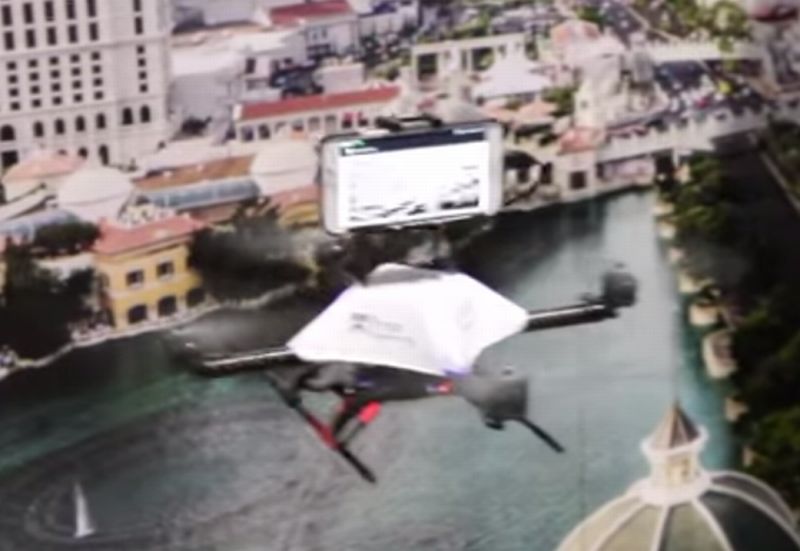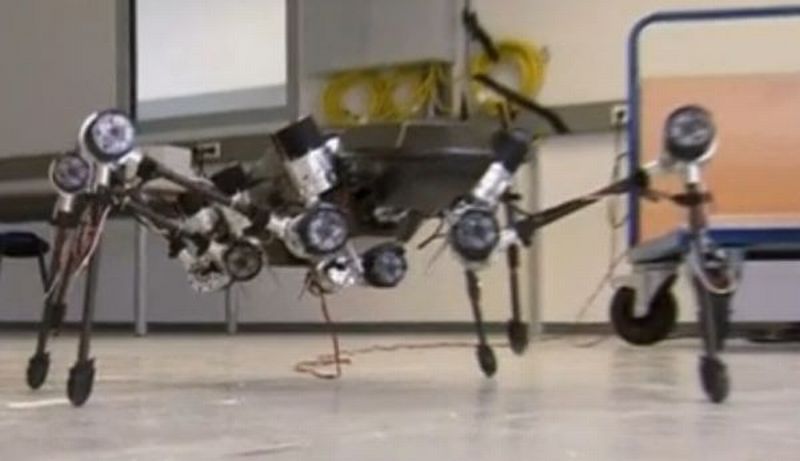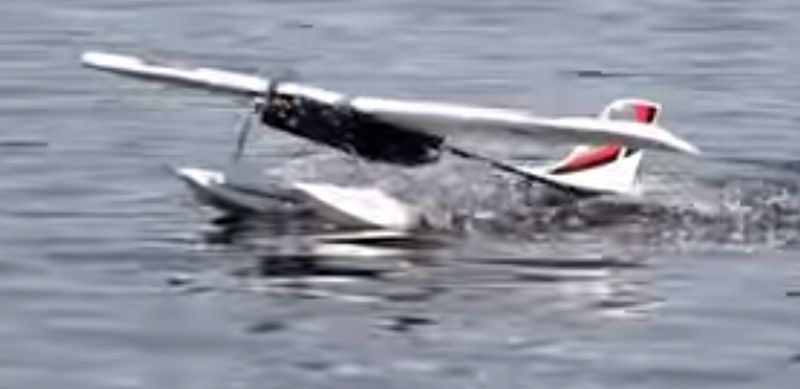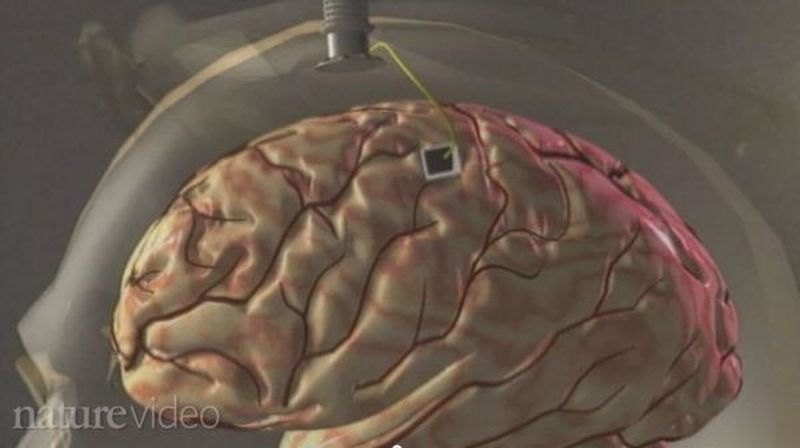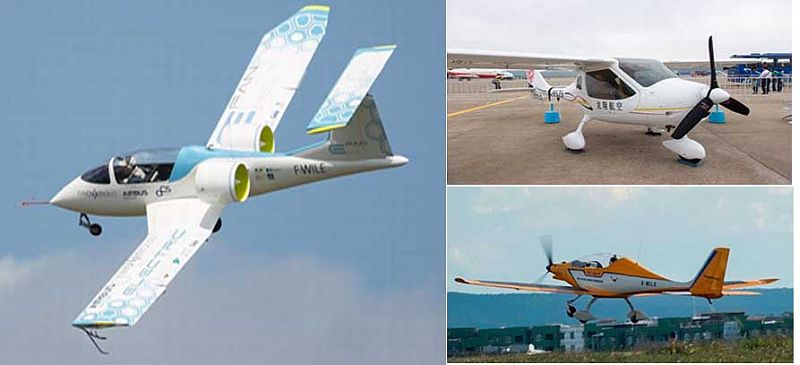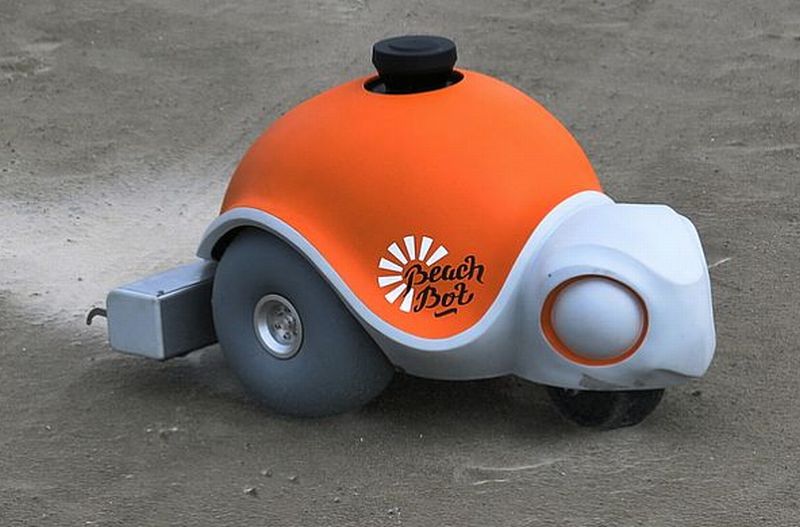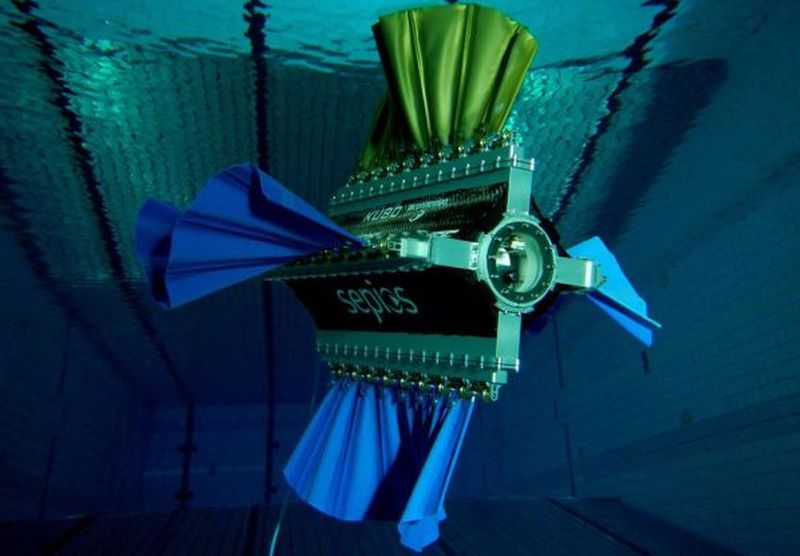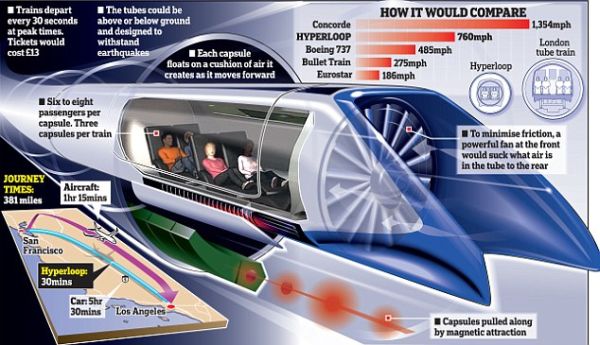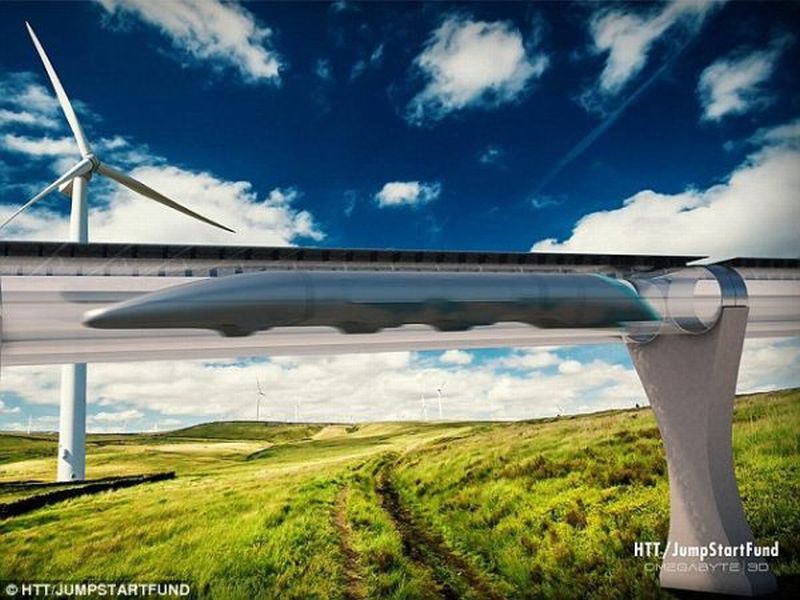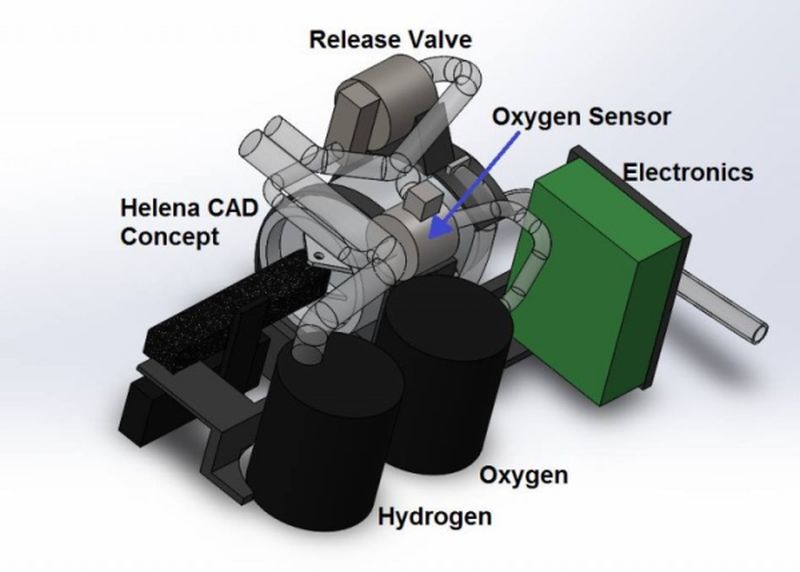Achieving 1Tbps wirelessly might not remain a farfetched dream now. Researchers at the University of Sydney have touched the threshold of 5th generation wireless systems of Terrabyte per second. Yes, you guessed it right, downloading 10 movies per second at an uber-speed of 1Tbps.
Read MoreTag: futuretech
Homo chippiens: Mimicking Human Body using networks of Simulated Organs
In an attempt to create a ‘body on a chip’, scientists are working towards fabricating minute working organs of human body on a set of inter-related plastic chips. They have already developed fingertip-sized lungs, guts and livers on the chips. For instance, researchers at Harvard University’s Wyss Institute are revamping ‘bone marrow on a chip’ for studying the effect of radiation.
Read MoreVolvo Cars to share Slippery-Road Warning: Driving Safety Systems
During rough winters, drivers have to deal with icy patches themselves. Situation becomes critical during nights when they have to fight the patches while driving in a different zone. However, things might become different when cars start sharing the on-road conditions amongst themselves.
Read MoreSamsung’s Smart TV to Eavesdrop on Conversation: The TV Phone
South Korea’s Samsung Electronics Co. has come up with a futuristic TV that can listen and share conversation taking place real time in its surrounding. Watching TV won’t be just a one sided affair now, it’s morphing towards becoming phone, just the camera is missing though. Period.
Read MoreNew Mobile Manipulator TIAGo: The Best Research Partner
After the success of REEM humanoid, PAL Robotics, Spain has come up with TIAGo (Take It And Go). The bot is integrated with mobile manipulator system, which gives it an edge of mobile platform by extending the workspace of robotic manipulator arm.
Read MoreSmartphone driven Autonomous Drone: The Smart Copter
For the first time consumer-grade electronics are used for programming autonomous drones. This drone makes use of smartphone as its brain. The phone senses its environment by taking real time pictures. Even the real time computation is done on the device itself along with higher-level autonomy, maneuvering, navigation, control and computer vision algorithms. The product is the brainchild of GRASP Laboratory, University Of Pennsylvania. Click on the video below to see the autonomous flying robot: This makes me think, if you lose your smartphone, you’d end up losing the drone…
Read MoreHector Robot is the Giant Stick Insect: Biomimicry
Biomechatronics researchers at Bielefeld University, Germany have come up with a bot called Hector that is inspired from stick insect, another invention in the field of biomimicry. The insect bot has six limbs with an ability of functioning independently. The embedded sensors help it in reacting autonomously to its external setting and accordingly assist in learning from experience. Only for research platform Jan Paskarbeit, the developer envisions Hector in areas like testing animal locomotion theories. The bot however, is not designed with an intention of severing humans in areas like…
Read MoreDrones to take Water Samples: New Era of Hands-on Aerial Robots
Drones embedded with cameras or infrared sensors have been doing well in areas like farming and surveillance but it seems that researchers are looking forward to extend the current restrictions. Thinking on these terms, some engineers have come up with tiny crafts that have an ability of scooping up water samples for identifying invasive species and checking oil leaks over the surface. Some drones of the similar kinds have been upgraded as they can even carry out rudimentary analysis on the collected water sample. This would come as a handy…
Read MoreHead Mounted Wireless System Fabricated: Paralyzed Patients to convey thoughts at the speed of Internet
Now paralyzed patients would soon be conveying their thoughts via remote control manually attached to their skull. Experts at Brown University in collaboration with Blackrock Microsystems, a firm based in Utah have fabricated the wireless device. They claim that the gizmo can be implanted to the skull of a patient and then the thought commands are transmitted by the inbuilt radio system. As per the sources, once it gets clearance from the U.S. Food and Drug Administration, the device would be tested on volunteers, by the end of this year.
Read MoreElectric Planes to serve Training Markets: The New Era of Aviation
Airbus in collaboration with a Chinese aviation manufacturer envisions that the time has come for electric airplanes hitting the mainstream aviation projects including training flights. It’s been quite some time now since electric aviation have been working towards creating electric trainers because of its affordability, cleanliness and vibration-free quality relatively.
Read MoreBeachBot creates artworks on an Infinitely Reusable Canvas: Robot Artist
Disney Research Zurich in collaboration with ETH Zurich have designed a robot called Beachbot that has the potential of carving impeccable huge sand drawings. Equipped with wi-fi computer, an inertial measurement unit (IMU) and laser scanner, the Beachbot walks effortlessly on sand making paintings. Laser scanner helps it to restrict its canvas boundaries within four poles mounted alongside the area. It also uses laser data and the IMU for its own location while it steers with millimeter accuracy inside the restricted area. Building rake mechanism that would compliment drawing tool…
Read MoreSepios the Nautical Robot inspired by Cuttlefish: Biomimicry
The Swiss Federal Institute of Technology (ETH) in Zürich has come up with a robot, movement of which is inspired from cuttlefish. One of its own kind, Sepios is a bot with four orthogonal fins. Peep on the link below and see the undulating fin propulsion from the ETH’s nautical robot:
Read More10 Screenshots from Musk’s Open Source Tube Transport System: The Hyperloop
Elon Musk’s concept of travelling through conduits has started making progress. His research company, Hyperloop Transportation Technologies (HTT) has already gathered over 100 engineers and is working along crowd collaboration approach. Musk, the inventor, engineer and entrepreneur, envisions developing ultra speed, intercity transporter using a low-pressure tube train, which would run at a speed of 760 mph. Each capsule would carry 6-8 passengers and depart after every 30 seconds. As per him, the project, Hyperloop, would touch completion within seven to ten years. Due to his current commitment with SpaceX,…
Read MoreHyperloop is crossing the threshold of a Pipe Dream: Elon Musk’s 760mph Supertube
Last year, Elon Musk, the Tony Stark of our real world when surfaced his futuristic concept of human transportation at the speed of sound via pods, some of the people, who doubted his abilities considered it no more than a figment of imagination, which was far from becoming a reality. However, Musk, the man behind PayPal, Tesla and SpaceX, showed an air of seriousness for his pipe dream. In order to herald a revolution in travel industry, bypassing the traffic and the railroad project, he created a new firm by…
Read MoreHelena device can create Oxygen on Red Planet: Global Contest for Mars One’s First Unmanned Lander
Mars One, the controversial project that plans to create a permanent human settlement on the Red Planet has organized a competition called the Mars One University Competition. The competition has invited designers to prepare technology that can supply Mars citizens with breathable air. The victorious payload will have the opportunity to travel to Mars One initial unmanned lander mission that is scheduled to land on Mars in 2018. This mission will in turn prepare the way for the future colonists planning to reach Mars in 2025. A student team from…
Read More

